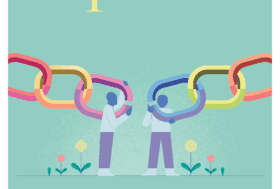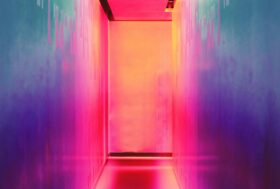Developing learning through questioning and modelling in early childhood education
This video shows a practitioner supporting young children’s learning at Essa Primary School in Bolton. As you watch the video, notice how the practitioner shapes the interaction to develop the pupils’ learning. Specifically:
- Focus on how the practitioner uses questioning and modelling to recall and embed the pupil’s understanding of the topic and key vocabulary
- Notice how the practitioner encourages the pupils to expand their capacity for independent learning by considering using alternative resources of information. What impact might this have on pupil motivation?
You need to be logged in to view this video
Good girl. But [pupil’s name], have a look, what else you can see?
So what’s that one? A bowl of wood.
It’s a bowl, isn’t it? Made from wood. You’re right.
[pupil speaking]
That’s plastic. Plastic’s very strong, isn’t it? It’s a very strong material.
Glass there. Glass is good. You can mould it into different shapes but [pupil’s name], glass is very fragile.
What do you think is going to happen if I drop this on the floor? It will break.
It will break. So glass, we can mould it. It’s really useful for us but actually it can be fragile and if we drop it it can smash, can’t it?
So we’ve got to take good care of it. Yep.
I know what this does.
Did you hear it? You’ve got to be gentle so it doesn’t smash.
What material is that? It’s a golden bowl.
It does look like a golden bowl. Can you remember what it’s made from?It’s hard.
It is hard. You’re right. Let me show you something.
This is made from the same material, it’s just a different colour. So what’s this one made from?
Can you remember? We did it in a vocabulary book, didn’t we, recently?
It’s m…. Magnetic. It’s metal. Metal. Can you say that? Metal.
Metal. So this metal… Remember when we talked about what metal is. Metal comes from the… Ground. It comes from the ground, doesn’t it?
And metal is usually a silvery-grey colour, but actually, this metal is different. It’s gold. Okay. It’s a different colour but it’s still metal.
Did you know, my mum has the same things in this area? Does she? Yeah. Does she? Yeah.
And she has the baskets for me to do a challenge. Does she? Yeah. So you can do challenges at your house. Yep. That’s fabulous. Where are we going to sort these out?
There we go. Fantastic. Right. Let’s have a look at what else we’ve got in there. Glass. Good girl.
I know what is this. Plastic. Plastic. Well done and what’s it been moulded into? What shape has it been moulded into?
It’s a big circle. It’s not a big circle. It’s got a circle shape on the bottom, hasn’t it?
It’s got a circle-shaped face at the bottom, but can you remember the 3D shape name for this?
It’s a… cy-lin-der. Cylinder. It’s a cylinder, isn’t it?
Yep. So I know where this goes. It’s made of plastic. It is. Well done. Good sorting. That’s brilliant sorting.
Um, this is some wood. That’s wood. Where does wood come from? From trees.
Wood comes from trees. Good girl. It does. It does and they’ve moulded that shape, haven’t they? And they’ve created a wooden… I think that’s a letter, isn’t it? If we turn it round, what letter is that? ‘Eh’. ‘Eh’. Fantastic.
So I know where’s wood. Right there. It does go right there. It does. What’s this?
[pupil response]
A plastic wand. It is. Well done. You’re very good at identifying different materials. It does go in there.
[pupil speaking]
You can, yeah. So that’s helped you a little bit that one, hasn’t it?
This is what I had for lunch. Is it? You had that for lunch yesterday? Yeah. Now, what do you think that is made from?
I can hear it. You can hear it. Does it make a rustling noise when we squeeze it? Makes a rustling noise, doesn’t it? But what do you think the material is made from?
What do you think? That’s a tricky one, isn’t it? Yeah.
What do you think? I think it’s plastic.
Plastic. You’re right. That’s exactly right. It is. It’s made from plastic. Good job.
Now I think we’re going to do one more, [pupil’s name], and I think we should invite a friend to come and help us as well, okay.
Do you want to come and have a look at this challenge?
[pupil speaking]
So do you want to see if you can have a little look and sort out the different materials? Is that okay?
[pupil’s name] is drawing a picture of one of the things she’s sorted and she’s labelling it.
Wood. Wood. Fabulous. Good girl. Right, so here we are, we’re up to c-r-i… C-r-i-s-p… S-p.
Now we’ve not just got one crisp, have we? We’ve got… Well, there were lots of crisps in there. So what do we need to add? Fantastic. Crisps. And the packet is made from… Plastic.
[pupil speaking]
Plastic. And that is helping you. Well done. That’s helping you.
You could write it up at the top, couldn’t you?
Do you want to tell me about that [pupil’s name]? What do you think that’s made from? Glass. Glass.
How do you know that’s made from glass? Because it feels like glass. It feels like glass.
It’s quite hard, yeah. It’s hard, isn’t it? And look, you can see through it. You can see through that glass. Can you see? There’s my fingers behind. That helps us to know, doesn’t it?
What about that one? Do you think that one is glass?Have a feel. No. No. What do you think? It is plastic.
It is plastic. Do you agree with [pupil’s name]? Do you think that one’s plastic? Yes.
I think so too. It goes in there. And I’m writing it down.
[pupils speaking]
Let’s do one more.
That is absolutely fabulous. High five. Good job. Well done. Can we keep that? Can we share that in reflection later? Yep. Yeah.
So let’s take that one off and what I want you to do… See if you can write the short date at the top and write your name at the back. [pupil response]
Can you remember where to look for the short date? Yeah. You can look on my board, can’t you?
So you could go and take that and you could go and write the short date and write your name and then you can put it on my desk. Okay. Is that a good idea?
[pupil speaking]
It does look a bit like an ‘i’, doesn’t it?
And look, if we turn it that way, it’s actually a number… 1. 1.
What do you think that’s made from? Wood. Wood.
Fantastic Good sorting. Well done, [pupil’s name].





